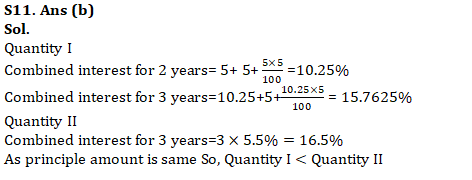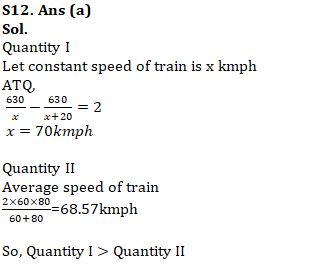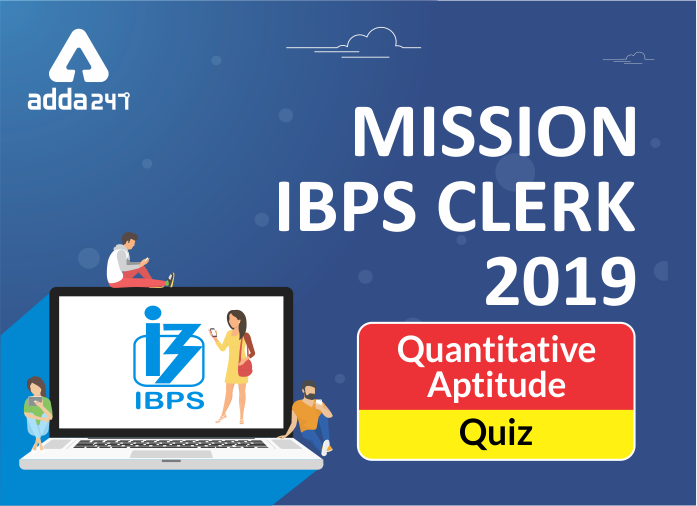Q1. Three pipes A, B and C can fill a tank separately in 12 hours, 15 hours and 30 hours respectively. Find out the time taken by all pipes to fill the tank when all pipes are opened together?

Q2. Two pipes A and B can fill a tank in 15 hours and 20 hours respectively. how much time taken by both pipes to fill the tank when they are opened alternately for 1 hour, starting from A?
(a) 14 hours
(b) 16 hours
(c) 15 hours
(d) 17 hours
(e) 18 hours
Q3. Inlet pipe A is 5 times more efficient than Inlet pipe B to fill the tank. If Inlet pipe A can fill the tank in 21 min. then how much time is taken by both pipes to fill the tank when both pipes are opened together?
(a) 15 min
(b) 14 min
(c) 16 min
(d) 17 min
(e) 18 min
Q4. Two pipes A and B can fill a tank separately in 10 min and 15 min respectively. There is also an outlet pipe C. if the all the three pipes are opened together. The tank is filled in 12 min. find out the time taken by pipe C to empty the fully filled tank?
(a)12 min
(b)13 min
(c)15min
(d)11 min
(e)18 min
Q5. Two pipes A and B together can fill the tank in 20 min, pipes B and C together can fill the same tank in 30 min and C and A together can fill the same tank in 40 min. Then find out the time taken by pipe A alone to fill the tank?
(a)46 min
(b)42 min
(c)48 min
(d)47 min
(e)45 min
Q6. The speed of boat in still water is 16 km/h. A boat goes 120 km and come back to its starting point in 16 hours. Find the speed of current?
(a)5km/h
(b)4km/h
(c)6km/h
(d)3km/h
(e)7km/h
Q7. The speed of boat in still water is 9 km/h and speed of current is 1.5 km/h. then what is time taken by boat to cover 97.5 km in upstream?
(a)11hours
(b)15hours
(c)14hours
(d)13hours
(e)16hours
Q8. Two boat A and B start towards each other from two places 170 km apart. The speed of boat A and B are 16 km/h and 18 km/h respectively. Then find the taken by boat to meet each other? (boat A in upstream and boat B in downstream)
(a) 5hours
(b) 4hours
(c) 6hours
(d) 3hours
(e) 7hours
Q9. The speed of boat in still water 15km/h. The difference between speed of boat in downstream and upstream is 5km/h. Then find out the time taken by boat in upstream to cover 162.5km?
(a)14 hours
(b)11 hours
(c)13 hours
(d)12 hours
(e)17 hours
Q10. The time taken by a boat in upstream is two times time taken by the boat in downstream to cover a certain distance. If speed of boat in still water is 15km/h. then find out the speed of current?
(a) 4km/h
(b) 6km/h
(c) 7km/h
(d) 5km/h
(e) 3km/h
Directions (11-15): In the following questions, calculate quantity I and quantity II, compare them and answer
Q11.
Quantity I- Compound interest (in Rs.), A certain sum of money P at 5% per annum for 3 years.
Quantity II-Simple interest (in Rs.), same sum of money P at 5.5% per annum for 3 years.
(a) If quantity I > quantity II
(b) If quantity I < quantity II
(c) If quantity I ≥ quantity II
(d) if quantity I ≤ quantity II
(e) if quantity I = quantity II or no relation can be established
Q12.
Quantity I- Speed of Train (in kmph), A train covers a certain distance of 630km at constant speed. If speed of train increased by 20 kmph. Then journey would take 2 hours less.
Quantity II-Average speed (in kmph), A train covers half journey at the speed of 60 kmph and half of journey at the speed of 80 kmph.
(a) If quantity I > quantity II
(b) If quantity I < quantity II
(c) If quantity I ≥ quantity II
(d) if quantity I ≤ quantity II
(e) if quantity I = quantity II or no relation can be established
Q13.
Quantity I- Age of B (in years), if the ratio of the ages of A, B and C are 3:2:1 and the average of their ages is 24 years
Quantity II-Average age (in years), if the ages of A, B and C are 23 years 3 months, 24 years 6 months and 24 years 3 months respectively.
(a) If quantity I > quantity II
(b) If quantity I < quantity II
(c) If quantity I ≥ quantity II
(d) if quantity I ≤ quantity II
(e) if quantity I = quantity II or no relation can be established

Q15.
Quantity I-Speed of train (in m/s), A 270m long train cross the 180m long bridge in 9 sec.
Quantity II-Speed of train (in m/s), A train covers 360km long distance in 3 hours.
(a) If quantity I > quantity II
(b) If quantity I < quantity II
(c) If quantity I ≥ quantity II
(d) if quantity I ≤ quantity II
(e) if quantity I = quantity II or no relation can be established
solutions:















If you want to study Quantitative Aptitude for IBPS PO Prelims then you can also check out the video given below:
- Quantitative Aptitude Study Notes for Bank Exams
- Quantitative Aptitude Questions for all Competitive Exams





 GA Capsule for SBI Clerk Mains 2025, Dow...
GA Capsule for SBI Clerk Mains 2025, Dow...
 The Hindu Review October 2022: Download ...
The Hindu Review October 2022: Download ...
 IBPS PO Apply Online 2025, Online Applic...
IBPS PO Apply Online 2025, Online Applic...


